<< Previous | Displaying results 201-250 of 489 for "warsaw" | Next >>
Portrait of Josef Kaplan. Kaplan was a youth movement leader. He was also a leader of the Warsaw ghetto underground and Jewish Fighting Organization (ZOB). He was caught preparing forged documents and was killed. Poland, before September 1942.
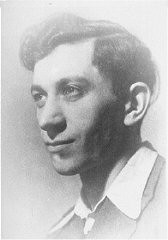
Close-up portrait of Miriam Wattenberg (Mary Berg). Because Mary's mother was American, she and her family were sent from the Warsaw ghetto to Vittel in to be held for possible prisoner exchange. Her diary became the first wartime published eyewitness account in English of life in the Warsaw ghetto and the deportation of its inhabitants to be murdered at Treblinka.
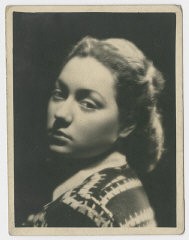
German personnel on Grzybowska Street arrest and search Jewish men who supposedly hid weapons prior to the German occupation of Warsaw. Warsaw, Poland, October-December 1939. This is one of a series of photos taken by Arthur Grimm, an SS propaganda company photographer, documenting the investigative work of the Sicherheitsdienst (SD) in occupied Warsaw for the Berliner Illustrierte Zeitung. Although only some of the photos were published, it is likely that the incidents depicted in the BIZ were staged…
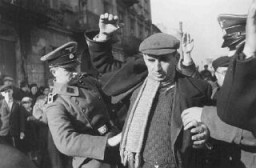
An emaciated woman sells the compulsory Star of David armbands for Jews. In the background are concert posters; almost all are destroyed. Warsaw ghetto, Poland, September 19, 1941. This photograph was taken by Heinrich Joest, a German army sergeant during World War II. On September 19, 1941, he took 140 images of every aspect of life and death in the Warsaw ghetto.
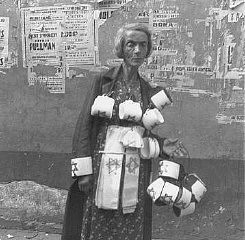
A German policeman interrogates a Jewish man accused of trying to smuggle a loaf of bread into the Warsaw ghetto. Warsaw, Poland, 1942-1943.
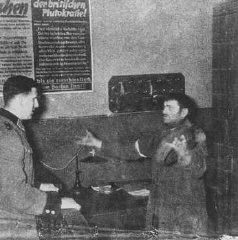
Soldiers of the Polish Home Army (Armia Krajowa) take cover behind a barricade during the Warsaw Polish uprising. During the uprising, the Home Army was supported by 2,500 soldiers from other resistance movements, such as the National Armed Forces (Narodowe Siły Zbrojne, NSZ) and the communist People's Army (Armia Ludowa, AL). Only a quarter of the partisans had access to weapons, fighting against 25,000 German soldiers equipped with artillery, tanks, and air forces. Two of the three soldiers shown here…
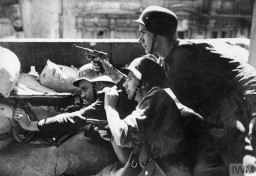
Soldiers of the Polish Home Army Women's Auxiliary Services, taken captive by the Germans in October 1944 as a result of the Warsaw Polish uprising. After the uprising ended on October 2, the Germans took as prisoners of war more than 11,000 soldiers of the Polish Home Army.

Abraham was born to a Jewish family in the Polish capital of Warsaw. His grandfather owned a clothing factory and retail store, which his father managed. Abraham's family lived in a Jewish section of Warsaw and he attended a Jewish school. Warsaw's Jewish community was the largest in Europe, and made up nearly one-third of the population of the city. 1933-39: After the bombardment of Warsaw began on September 8, 1939, Abraham's family had little to eat. The stores had been reduced to rubble; they had no…

Chil was born to a Jewish family in the industrial city of Łódź. His mother died before World War II, leaving his father to raise the family. Chil worked to help his father support his siblings. 1933-39: On September 1, 1939, Nazi Germany invaded Poland. Chil fled Łódź with his younger sister Rivka to Pruszków, a small town 10 miles southwest of Warsaw. 1940-45: In October 1940, German authorities established an open ghetto in Pruszków. In January 1941, the Germans transported most of the Jews…

One of the milk cans used by Warsaw ghetto historian Emanuel Ringelblum to store and preserve the secret "Oneg Shabbat" ghetto archives.This milk can, identified as no. 2, was unearthed at 58 Nowolipki Street in Warsaw on December 1, 1950.
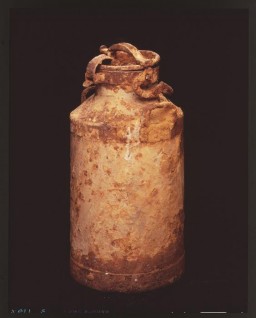
Janusz Korczak (center) and Sabina Lejzerowicz (to his right) pose with children and younger staff in Korczak's orphanage in Warsaw, circa 1930-1939. Even as they were deported to their deaths at Treblinka in 1942, Korczak and his staff stayed by their children.
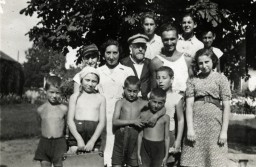
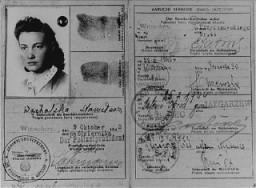
Portrait of Janek Goldstein, in pencil, by Yonia Fain. Goldstein, a friend of the artist in Shanghai, was the son of Bernard Goldstein, who was active in the Bundist underground of the Warsaw ghetto and participated in the 1943 uprising. [From the USHMM special exhibition Flight and Rescue.]
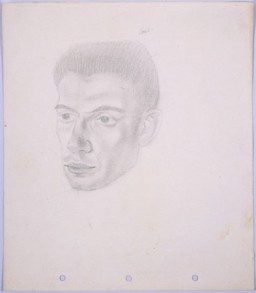
SS and Police Leader Juergen Stroop interrogates two Jews arrested during the Warsaw ghetto uprising. Poland, April 19-May 16, 1943.
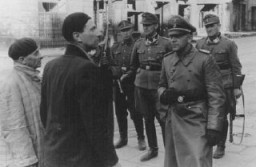
Juergen Stroop (third from left), SS commander who crushed the Warsaw ghetto uprising. Warsaw, Poland, between April 19 and May 16, 1943.
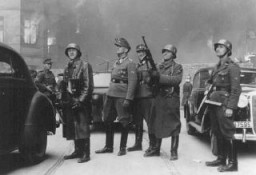
Jozef was the youngest of three children born to Roman Catholic parents in the town of Rzeszow in southern Poland. Jozef's father was a career officer in the Polish army. Jozef excelled in sports, and his favorite sport was gymnastics. He also studied the piano. 1933-39: Jozef was 14 when Germany attacked Poland on September 1, 1939. The invasion affected him deeply. Brought up in a patriotic family, he had been taught to love and defend Poland. The Germans were bombing Warsaw, the Polish capital, but…
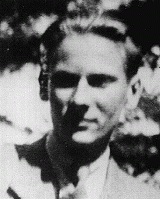

Yitzhak Gitterman (left), Joint Distribution Committee (JDC) director in Warsaw, meets with the representative of an Orthodox Jewish organization. Warsaw, Poland, date uncertain.
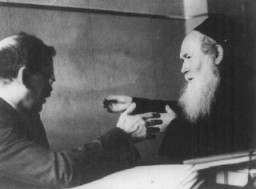
A captured Jewish resistance fighter who was forced out of his hidden bunker by German soldiers during the Warsaw ghetto uprising. Warsaw, Poland, April 19-May 16, 1943.
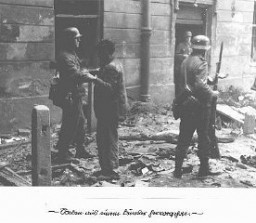
Ben Kamm in uniform after the war. Ben escaped from the Warsaw ghetto and joined partisan units to resist the Nazis. At the end of the war he discovered he was the sole survivor of his entire family.
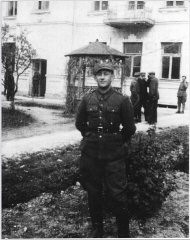
Born to Jewish parents in Poland, Gisha Galina Bursztyn moved to the city of Warsaw after she married. On September 1, 1939, Germany invaded Poland. Warsaw fell four weeks later, and a ghetto was set up in November 1940. During a massive roundup i...
Born to Roman Catholic parents in Poland, Jozef Wilk was a teenager when Germany invaded in 1939. Jozef left for Warsaw and joined a special unit of the Polish resistance. During the 1943 Warsaw ghetto uprising, Joz...
Szlamach Radoszynski was 27 years old when Germany invaded Poland in September 1939. The following year, Szlamach and the rest of the Jews of Warsaw were forced into a ghetto. After the ghetto uprising in 1943, Szlamach was deported to Auschwitz a...
A postcard sent to Ruth Segal (Rys Berkowicz) care of the Jewish Community (JewCom) in Kobe, Japan. Family and friends in German-occupied Warsaw, Poland, sent the postcard on June 20, 1941. It bears stamps both from the Jewish council (Judenrat) in the Warsaw ghetto and from German censors. [From the USHMM special exhibition Flight and Rescue.]
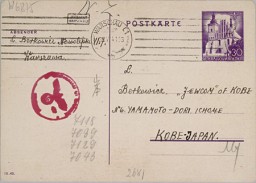
Family and friends of Ruth Segal (Rys Berkowicz) sent this postcard to her in Kobe, Japan. They sent the postcard from Warsaw, in German-occupied Poland, on June 20, 1941. [From the USHMM special exhibition Flight and Rescue.]
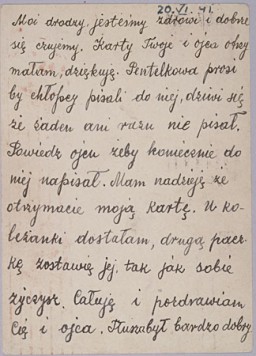
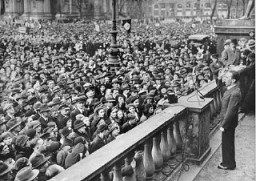
This tan backpack was used by Ruth Berkowitz to carry her belongings as she fled from Warsaw via Lithuania and the Soviet Union to Japan. Most of her possessions were confiscated by both the Nazis and the Soviets during her journey. [From the USHMM special exhibition Flight and Rescue.]
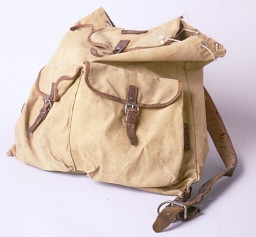
Program for an evening performance sponsored by the Shanghai Jewish Club. The program included the play "The Day of His Return" and a concert of Jewish songs. On April 27, 1943, the day of this performance featuring Warsaw Jewish actress Raya Zomina, fierce fighting continued in the Warsaw ghetto between German troops and Jews who chose to resist Nazi efforts to liquidate the ghetto. Terrifying rumors about the Holocaust reached the Jewish refugees in Shanghai, but they did not receive reliable news or…
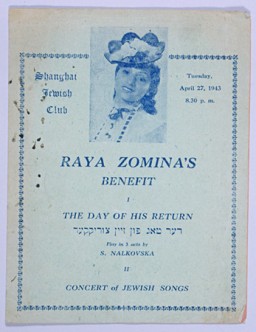
Abraham Blum, leader of the Bund (Jewish Socialist party) and member of the Jewish Fighting Organization (ZOB). Blum participated in the Warsaw ghetto uprising. Poland, between 1940 and 1943.
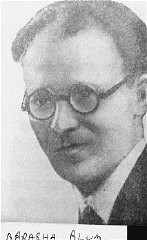
Yitzhak (Antek) Zuckerman, Zionist youth leader and a founder of the Jewish Fighting Organization (ZOB). He fought in the Warsaw ghetto uprising. Place and date uncertain.

False identification card photo of Benjamin Miedzyrzecki (Benjamin Meed) as a member of the Warsaw ghetto underground. Warsaw, Poland, 1943.
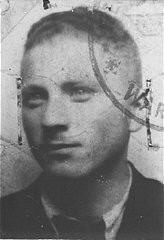
False identification card which Vladka Meed had used from 1940–42 on the Aryan side of Warsaw, smuggling arms to Jewish fighters and helping Jews escape from the ghetto.

German soldiers parade in Pilsudski Square. Warsaw, Poland, October 4, 1939.
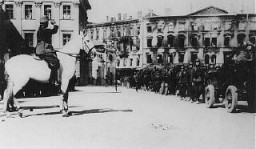
Wartime portrait of Andrzej Klimowicz, Poland. Andrzej Klimowicz (1918–1996) aided and rescued Jews in Warsaw throughout the duration of the German occupation of Poland. He eventually became a member of the Council for Aid to Jews (codenamed “Żegota”), a clandestine organization that coordinated efforts to save Jews from Nazi persecution and murder. Under the auspices of Żegota, Andrzej played a role in providing Jews in Warsaw with forged identity papers and hiding places outside the walls of the…
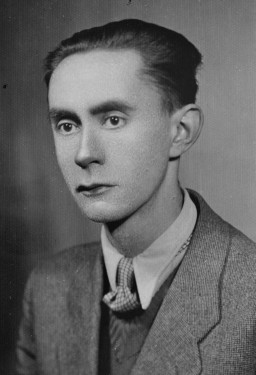
A ten-year-old Polish girl, Kazimiera Mika, mourns the death of her older sister, who was killed in a field in Warsaw, Poland, during a German air raid. Photographed by US documentary filmmaker, Julien Bryan, on September 13, 1939.

Father Wlodarczyk attempts to clean and repair a bombed-out church in the besieged city of Warsaw. Photographed by Julien Bryan, Warsaw, Poland, ca. 1939.
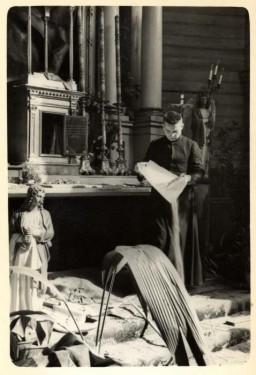
Exterior view of the Jewish orphanage run by Janusz Korczak. Established in 1912, the orphanage was located at 92 Krochmalna Street in Warsaw, Poland. Photo taken circa 1935.
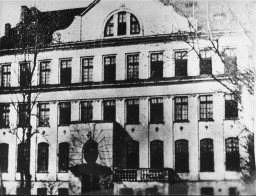
September 5, 1942. On this date, Germans issued this poster announcing the death penalty for anyone found aiding Jews who fled the Warsaw ghetto.
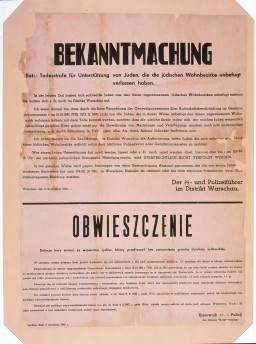
Germany invaded Poland on September 1, 1939, beginning World War II. Quickly overrunning Polish border defenses, German forces advanced towards Warsaw, the Polish capital city. This footage from German newsreels shows German forces in action during the invasion of Poland. Warsaw surrendered on September 28, 1939.
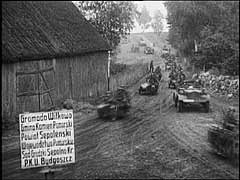

Photograph from SS General Juergen Stroop's report showing the Warsaw ghetto after the German suppression of the ghetto uprising. Stroop, commander of German forces that suppressed the Warsaw ghetto uprising, compiled an album of photographs and other materials. This album later came to known as "The Stroop Report." The right of this image from the album shows a column of Jews being transported out of the ghetto for deportation. Warsaw, Poland, April–May, 1943.
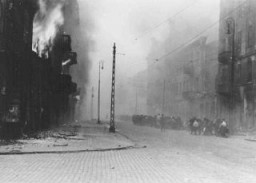
Irena Sendler (1910–2008) was a member of the Council for Aid to Jews, codenamed “Żegota.” Żegota was a clandestine rescue organization of Poles and Jews in German-occupied Poland. Supported by the Polish government-in-exile, Żegota coordinated efforts to save Jews from Nazi persecution and murder. It operated from 1942 to 1945. Irena Sendler (Sendlerowa) was working as a social worker in Warsaw when World War II broke out in 1939. After the Nazis forced Warsaw’s Jews to move into the ghetto…
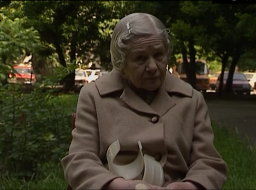
Portrait of Irena Sendler in Warsaw, Poland, circa 1939. Irena Sendler (1910–2008) was a member of the Council for Aid to Jews, codenamed “Żegota.” Żegota was a clandestine rescue organization of Poles and Jews in German-occupied Poland. Supported by the Polish government-in-exile, Żegota coordinated efforts to save Jews from Nazi persecution and murder. It operated from 1942 to 1945. Irena Sendler (Sendlerowa) was working as a social worker in Warsaw when World War II broke out in 1939. After…
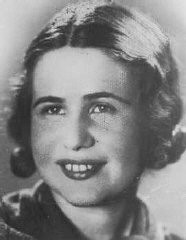
SS Major General Juergen Stroop, commander of German forces that suppressed the Warsaw ghetto uprising, compiled an album of photographs and other materials. This album, later known as "The Stroop Report," was introduced as evidence at the International Military Tribunal at Nuremberg. Here, its cover is marked with an IMT evidence stamp.
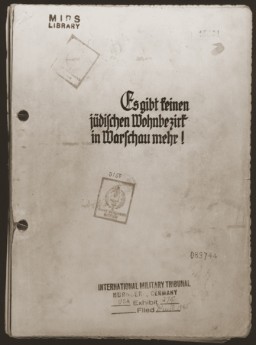
Yitzhak Gitterman was a director of the American Jewish Joint Distribution Committee in Poland and a member of the underground Jewish Fighting Organization.

We would like to thank Crown Family Philanthropies, Abe and Ida Cooper Foundation, the Claims Conference, EVZ, and BMF for supporting the ongoing work to create content and resources for the Holocaust Encyclopedia. View the list of donor acknowledgement.